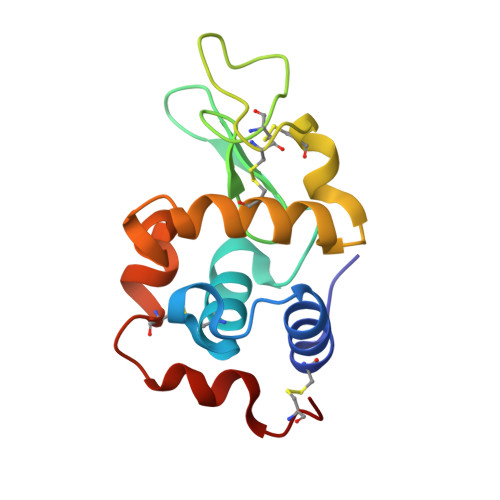Micro-structured polymer fixed targets for serial crystallography at synchrotrons and XFELs.
Carrillo, M., Mason, T.J., Karpik, A., Martiel, I., Kepa, M.W., McAuley, K.E., Beale, J.H., Padeste, C.(2023) IUCrJ 10: 678-693
- PubMed: 37727961
- DOI: https://doi.org/10.1107/S2052252523007595
- Primary Citation of Related Structures:
8PYO, 8PYP, 8PYQ - PubMed Abstract:
Fixed targets are a popular form of sample-delivery system used in serial crystallography at synchrotron and X-ray free-electron laser sources. They offer a wide range of sample-preparation options and are generally easy to use. The supports are typically made from silicon, quartz or polymer. Of these, currently, only silicon offers the ability to perform an aperture-aligned data collection where crystals are loaded into cavities in precise locations and sequentially rastered through, in step with the X-ray pulses. The polymer-based fixed targets have lacked the precision fabrication to enable this data-collection strategy and have been limited to directed-raster scans with crystals randomly distributed across the polymer surface. Here, the fabrication and first results from a new polymer-based fixed target, the micro-structured polymer fixed targets (MISP chips), are presented. MISP chips, like those made from silicon, have a precise array of cavities and fiducial markers. They consist of a structured polymer membrane and a stabilization frame. Crystals can be loaded into the cavities and the excess crystallization solution removed through apertures at their base. The fiducial markers allow for a rapid calculation of the aperture locations. The chips have a low X-ray background and, since they are optically transparent, also allow for an a priori analysis of crystal locations. This location mapping could, ultimately, optimize hit rates towards 100%. A black version of the MISP chip was produced to reduce light contamination for optical-pump/X-ray probe experiments. A study of the loading properties of the chips reveals that these types of fixed targets are best optimized for crystals of the order of 25 µm, but quality data can be collected from crystals as small as 5 µm. With the development of these chips, it has been proved that polymer-based fixed targets can be made with the precision required for aperture-alignment-based data-collection strategies. Further work can now be directed towards more cost-effective mass fabrication to make their use more sustainable for serial crystallography facilities and users.
Organizational Affiliation:
Paul Scherrer Institut, Forschungsstrasse 111, 5232 Villigen, Switzerland.
















